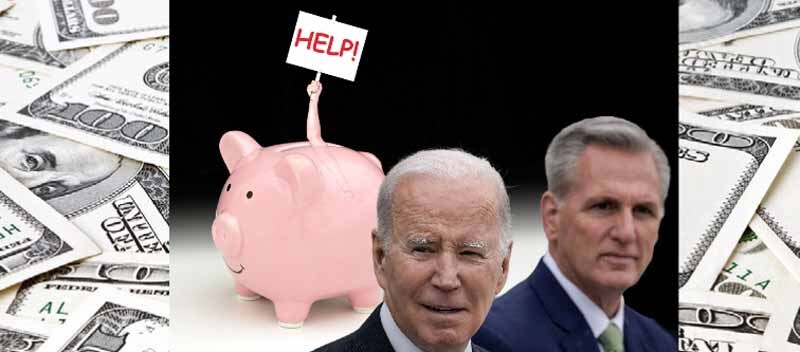Notifications
 admin -
May 28, 2023 -
Business -
Biden
McCarthy GOP
Debtt ceiling
-
1.5K views -
0 Comments -
0 Likes -
0 Reviews
admin -
May 28, 2023 -
Business -
Biden
McCarthy GOP
Debtt ceiling
-
1.5K views -
0 Comments -
0 Likes -
0 Reviews

DLNews Biz:
The deal is set to avert the threat of a government default and includes budget caps. In addition, it freezes non-defense spending next year at 2023 levels and limits future growth to 1%.
Raises the debt ceiling
Congressional leaders of both parties reached an agreement in principle to raise the debt ceiling and cap federal spending for two years. That would eliminate the threat of a catastrophic default on the government’s legal obligations and avoid another economic calamity that could hurt families and businesses across America.
It also ensures lawmakers won’t have to fight this issue again until after the 2024 elections. In the past, Congress has fought over the debt ceiling multiple times, and the threat of hitting the cap has been used as leverage for policy demands and to score political points.
Biden and McCarthy reportedly agreed to keep domestic spending at the fiscal year 2022 levels and limit topline federal growth to 1 percent annually for two years. In addition, the deal would maintain work requirements for Supplemental Nutrition Assistance Program recipients and wouldn’t change Medicaid. Those were issues that conservatives in the House had been pushing for.
Caps non-defense spending
While the top-line federal budget would not be subject to a cap, non-defense discretionary spending would fall or stay flat. As a result, other programs such as foreign aid, education, medical research, and even some energy projects could reduce their funding in real terms. This was a key demand of Republicans, unwilling to approve any debt limit increase without spending cuts.
The deal agreed by Biden and House Speaker Kevin McCarthy would keep non-defense spending capped at fiscal year 2023 levels, with small 1% increases in future years. This is significantly below the increases set by the Budget Control Act of 2011 but far above the amount that could have been cut under a separate Republican proposal.
The deal also extends the debt ceiling through 2025, which is well beyond the next elections and should help both parties avoid a fight over this issue during campaign season. It may give the new administration and Congress time to pass legislation to reduce the national debt through 2028.
Protects veterans and medical care
The agreement heads off a debt default that economists warn could wreak havoc by squeezing families and making it harder for millions to afford housing, food, and health care. But it also imposes two years of spending caps enforced with across-the-board cuts rather than by dollar amounts.
The deal would keep nondefense spending flat for the fiscal year 2024, then raise it by 1 percent the following year, a House GOP fact sheet shows. But it shields defense, Social Security, and Medicare from future spending cuts.
The deal rescinds $1.9 billion in IRS funding, which critics say is another example of “squeezing families to protect billionaires.” And it allows for energy permitting reform, a key priority of Sen. Joe Manchin, D-W.Va., that Republicans had sought to scale back in previous budget negotiations. But it also cuts the money available to help people with mental illness. That would affect people whose insurance comes through the Affordable Care Act marketplace and could mean higher premiums.
It doesn’t include new taxes.
Despite some Republican demands for budget cuts, the House-passed bill won’t include new taxes. Instead, the legislation caps the growth of non-defense spending for two years, which the Congressional Budget Office says will reduce the deficit by $4.8 trillion. The measure also limits the expansion of Medicaid and other social programs, adds work requirements for food stamp recipients, ends some renewable energy tax breaks that Democrats pushed through last year, and halts Biden’s student debt forgiveness plan.

Share this page with your family and friends.